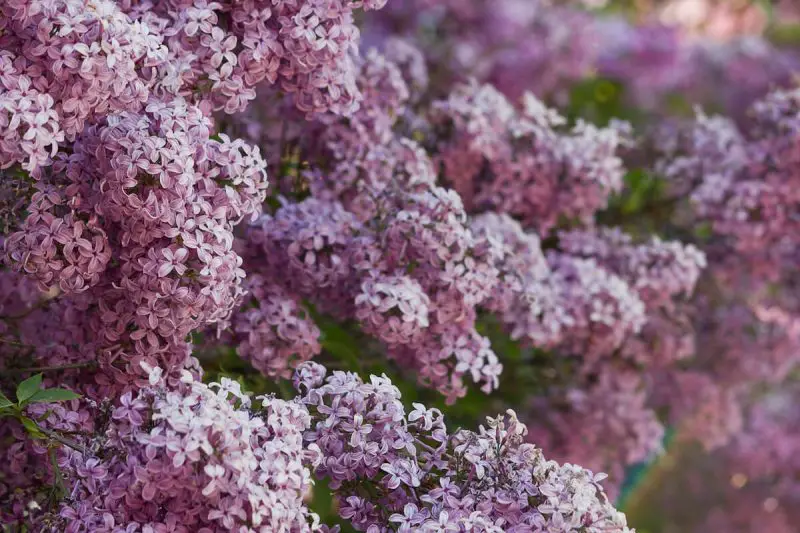Lilacs are among the most cherished flowering shrubs, admired for their vibrant clusters of blooms and unforgettable fragrance. They can live for decades, but sometimes they outgrow their space or fail to bloom as beautifully as before. When this happens, transplanting becomes the key to rejuvenating their health and beauty. Moving lilacs to a better location allows them to access more sunlight, improved soil, and room for stronger root development. With proper timing and care, transplanted lilacs not only recover quickly but also reward you with even fuller, more fragrant blossoms.
However, transplanting lilacs isn’t something to rush. The timing and method matter as much as the new location itself. Move them too early, and they might struggle to establish roots; too late, and you risk damaging next season’s buds. Understanding when and how to transplant your lilacs ensures that the process strengthens rather than stresses the plant. In this guide, you’ll learn the best time to transplant lilacs, how to prepare the soil, and what post-transplant care helps them thrive for years of healthy growth and abundant blooms.
Understanding Why and When to Transplant Lilacs

Lilacs are hardy, long-lived shrubs, but even the most established ones sometimes need a change. Over time, soil nutrients become depleted, roots grow crowded, or surrounding trees begin to cast too much shade. These factors can reduce the plant’s vigor, leading to fewer flowers and weaker growth. Transplanting gives lilacs a fresh start in nutrient-rich soil and brighter light, helping them regain their full beauty. It also allows you to rearrange your garden layout or divide mature lilacs to create new plantings elsewhere. The process, when timed correctly, encourages new root formation and healthier, more balanced growth.
The best time to transplant lilacs depends largely on the plant’s growth cycle. Most gardeners prefer early fall, after the blooming season has ended but before the ground freezes. During this period, lilacs are dormant, meaning they’re not actively producing new growth. This dormancy allows the plant to focus entirely on root establishment without the stress of supporting flowers or leaves. Transplanting in early spring is also possible, just after the ground thaws and before new shoots appear. Both times minimize shock and give the roots the best chance to adapt before the growing season begins.
Avoid moving lilacs during hot summer months, as the heat can quickly dehydrate the plant and slow recovery. Newly transplanted lilacs need cool soil, steady moisture, and gentle care to rebuild their root systems. Waiting until the weather is mild gives you a much higher success rate and ensures the plant returns stronger and more productive. When done thoughtfully and at the right time, transplanting reinvigorates your lilacs, setting the stage for healthier growth and a spectacular display of blooms year after year.
Choosing the Right Location Before Transplanting
Sunlight Requirements
Sunlight plays a crucial role in the success of transplanted lilacs. These shrubs thrive best in full sun, which means they need at least six to eight hours of direct light daily. When lilacs don’t receive enough sunlight, they may grow tall and leggy but produce very few blooms. Choosing a bright, open spot ensures your plant can focus on developing strong stems and vibrant flowers. Morning sunlight is especially beneficial because it dries moisture from leaves quickly, reducing the risk of fungal diseases. A location that receives morning and midday light but offers some protection from harsh afternoon heat is ideal for balanced growth.
When planning where to move your lilac, consider the surrounding landscape. Avoid planting near large trees or dense shrubs that might compete for light and nutrients. Lilacs also need space to grow freely, as good airflow around the plant helps prevent mildew and keeps leaves healthy. Proper light exposure not only boosts flower production but also enhances fragrance and overall plant vitality. By ensuring the new location offers abundant sunlight, you give your lilac the energy it needs to establish strong roots and produce more blooms each year.
Soil Conditions
Lilacs prefer well-draining soil that stays slightly moist but never soggy. Poor drainage can lead to root rot, especially after transplanting when the plant is more vulnerable. Before moving your lilac, test the soil’s texture and drainage. Sandy or loamy soil is ideal, while heavy clay should be amended with compost or coarse sand to improve aeration. The soil should be rich in organic matter, which nourishes the roots and helps retain just the right amount of moisture.
Soil pH also matters for lilacs. They thrive in slightly alkaline conditions, with a pH between 6.5 and 7.5. If your soil is too acidic, add garden lime to raise the pH before transplanting. Avoid fresh manure or heavy fertilizers, which can burn delicate roots. Instead, mix in aged compost or balanced organic fertilizer to create a nutrient-rich foundation. Healthy, well-prepared soil allows transplanted lilacs to recover faster and establish new growth within weeks. The right combination of sunlight and soil quality ensures your lilac’s long-term health and blooming success.
How to Transplant Lilacs Step-by-Step
Transplanting lilacs requires patience and care to ensure the plant adapts smoothly and continues to bloom for years. Begin by watering the lilac deeply a day before moving it. This step softens the soil, keeps roots hydrated, and makes digging easier. Choose a cool, overcast day or early morning to reduce stress on the plant. Dig around the lilac about 12 to 18 inches from the base, forming a wide circle to capture as many roots as possible. Use a spade to gently loosen the soil beneath the root ball, keeping it intact. For larger or older shrubs, having an extra pair of hands prevents accidental damage to the roots during lifting.
Before removing the lilac, prepare its new location carefully. The hole should be twice as wide as the root ball and just deep enough to match its previous planting depth. Mix compost or aged manure into the bottom of the hole to provide nutrients. Gently lower the lilac into the hole, ensuring it sits level with the ground. Refill halfway with soil, water thoroughly to eliminate air pockets, then finish filling and press the soil down lightly for stability. A slow, steady watering helps the roots settle in.
Once transplanted, water generously and apply a two-inch layer of mulch around the base to retain moisture and regulate soil temperature. Keep the mulch a few inches from the stem to prevent rot. For the first few weeks, monitor the plant closely and water regularly. With steady moisture, mild weather, and time, the lilac will establish strong roots. Within a season, you’ll notice fresh growth—a sure sign that your lilac has adjusted well and is ready to flourish in its new home.
Post-Transplant Care for Lilacs
After transplanting, proper aftercare is essential for helping your lilac adjust and thrive in its new location. The first few weeks are critical as the roots work to reestablish themselves. Begin by watering the plant deeply right after planting, ensuring that moisture reaches the lower root zone. Continue watering regularly for the first two to three months, especially if rainfall is scarce. However, avoid overwatering—lilacs dislike soggy soil, which can lead to root rot. The soil should remain moist but not waterlogged. Mulching around the base of the plant helps maintain moisture levels and protect the roots from temperature fluctuations. Keep the mulch a few inches away from the stem to prevent fungal problems.
Fertilizing should be minimal during the first season after transplanting. The roots are sensitive and can be damaged by strong chemical fertilizers. Instead, focus on natural nourishment. A layer of compost or well-aged manure applied in spring or early summer provides gentle nutrients as the plant establishes itself. Once the lilac shows new growth and signs of stability, you can begin light feeding with a balanced fertilizer in subsequent seasons. Avoid nitrogen-heavy products, as they promote leaf growth over flowers. Giving your lilac time to adjust before feeding ensures steady, healthy development without stress.
Pruning newly transplanted lilacs also requires care. Limit pruning to removing damaged or dead branches for the first year, allowing the plant to conserve its energy for root recovery. In later years, regular pruning right after blooming helps shape the plant and encourage new buds for the next season. Keep the area around the lilac free of weeds to reduce competition for nutrients and water. With consistent care, steady watering, and patience, your transplanted lilac will recover quickly, producing lush green foliage and plentiful blooms that grow stronger each year.
Best Seasons and Climate Tips for Transplanting Lilacs
Spring Transplanting
Spring is one of the most reliable seasons to transplant lilacs because it allows the plant to settle before the stress of summer heat. Ideally, the transplant should occur just after the ground thaws and before new growth begins. This timing ensures that the lilac is still dormant and ready to focus its energy on root recovery rather than foliage or flowers. Cool soil temperatures and mild spring weather make it easier for roots to establish without drying out. Early spring transplanting also minimizes transplant shock and provides a long growing period before winter dormancy returns.
Once the lilac is transplanted, water it deeply to help the soil settle around the roots. Maintain consistent soil moisture for the first eight to ten weeks to support new root formation. Apply a two-inch mulch layer to retain moisture and prevent weeds but keep it away from the main stem. Protect young transplants from late frosts by covering them lightly overnight if temperatures drop. Avoid heavy fertilization immediately after moving the plant, as it may force leafy growth too early. When done right, spring transplants adapt quickly, showing fresh shoots within weeks and producing healthy blooms the following season.
Fall Transplanting
Fall transplanting is highly effective for lilacs, especially in regions where winters are cool but not severe. After the blooming season ends and leaves begin to yellow, lilacs start entering dormancy, diverting energy from the top growth to the roots. This makes fall an ideal time for replanting. The roots continue to grow in the still-warm soil, strengthening before winter arrives. Aim to transplant at least six to eight weeks before the first frost, giving the plant ample time to settle in. Cooler air temperatures also reduce water loss from leaves, helping the lilac conserve energy during the adjustment period.
After transplanting, water thoroughly to eliminate air pockets around the roots and encourage even soil contact. Adding a layer of mulch insulates the soil and helps retain moisture through the colder months. It also protects the roots from freezing temperatures that could damage new growth. Avoid fertilizing in fall, as this encourages fresh shoots that can die back in frost. Instead, let the plant rest naturally through winter. When spring arrives, your fall-transplanted lilac will already have a strong, developed root system ready to support new growth and a season of vibrant blooms.
Regional Climate Considerations
Regional climate plays a decisive role in determining when and how to transplant lilacs successfully. In northern regions with extended, cold winters, early spring is the ideal time to transplant because it allows roots to establish before frost returns. Gardeners in southern climates, however, achieve better results by transplanting in fall when moderate temperatures and steady rainfall encourage recovery without heat stress. For locations with unpredictable weather, both early spring and late fall are suitable, provided soil temperatures remain between 45°F and 65°F. This range supports active root growth while reducing the risk of dehydration or freeze damage.
If you live in a dry or windy climate, provide extra watering during the first few months to help roots settle. Temporary shade cloths can protect new transplants from harsh sunlight, while windbreaks reduce moisture loss and root disturbance. For clay-heavy soils in wet regions, plant lilacs on slightly raised mounds to improve drainage and prevent rot. Monitoring soil moisture and temperature ensures your timing aligns perfectly with local conditions. By adapting transplant timing to your region’s unique climate, you’ll help your lilacs recover faster, grow stronger, and produce lush, fragrant blossoms that fill your garden every spring.
Common Mistakes to Avoid When Transplanting Lilacs
Transplanting at the Wrong Time
Timing is the most common mistake gardeners make when moving lilacs. Transplanting too early in spring or too late in fall exposes the plant to temperature extremes and increases the risk of transplant shock. In early spring, the soil might still be too cold or waterlogged for healthy root establishment. In late fall, freezing temperatures can damage fragile new roots before they have a chance to anchor. The best window is early spring before leaf growth begins or early fall when the plant is entering dormancy. This ensures the lilac focuses its energy on root recovery instead of foliage.
Another timing error is attempting to transplant during summer. The heat dries out the soil quickly, leaving the plant unable to absorb enough moisture through its disrupted root system. Even with frequent watering, lilacs often wilt and fail to establish under intense sunlight. Gardeners should also avoid transplanting during heavy rain or drought periods, as these conditions interfere with proper soil compaction and moisture balance. By choosing a mild, calm season for transplanting, you create the best environment for roots to reestablish and the plant to thrive. Patience and proper timing often determine whether a transplant flourishes or fails.
Damaging the Root System
Lilacs rely on their extensive root systems for both stability and nutrient absorption. A common mistake is digging too close to the plant or lifting it carelessly, which severs key roots and causes long-term stress. When digging, always start about 12 to 18 inches away from the main stem, working gradually toward the root ball. Keeping as many roots intact as possible ensures the lilac can quickly adjust after replanting. Avoid shaking off too much soil from the roots, as the surrounding earth helps retain moisture and microbial activity essential for recovery.
Roots should never be allowed to dry out during the transplanting process. If the new planting hole isn’t ready, temporarily wrap the root ball in a damp cloth or burlap to preserve hydration. When replanting, set the lilac at the same depth it was previously growing. Planting too deep can suffocate roots, while planting too shallow leaves them vulnerable to air exposure. Once in the ground, water thoroughly to eliminate air pockets and help the soil settle. Gentle handling and proper soil moisture protect the roots and help your lilac regain strength quickly after the move.
Neglecting Aftercare
Even after a successful transplant, poor aftercare can undo all your hard work. Lilacs need consistent attention during the first few months after being moved. Many gardeners either water too much or too little. Overwatering creates soggy conditions that lead to root rot, while underwatering causes the plant to wilt and lose foliage. The soil should stay evenly moist, especially during dry weeks. Mulching helps retain moisture but should never touch the stem directly, as it can trap humidity and cause decay. Balance is key—consistent but moderate watering allows roots to settle and strengthen.
Another common issue is fertilizing too soon. Newly transplanted lilacs are sensitive and should not receive fertilizer until they show fresh growth. Adding fertilizer prematurely can burn roots and disrupt recovery. Wait one full growing season before applying a balanced, slow-release formula. Also, avoid heavy pruning right after transplanting, as the plant needs its leaves to generate energy for root regrowth. Light trimming to remove dead or broken branches is sufficient. Proper watering, patience, and gentle care during the adjustment period ensure your lilac establishes firmly and rewards you with vigorous growth and abundant blooms the following year.
How to Divide and Replant Overgrown Lilacs
As lilac bushes mature, they often become crowded with old stems and dense roots that compete for nutrients. Over time, this can lead to fewer flowers, weaker growth, and an untidy appearance. Dividing overgrown lilacs helps rejuvenate the parent plant and allows you to create new bushes from healthy offshoots. The best time to divide lilacs is in early spring before new growth begins or in early fall after the blooming season has ended. During these periods, the plant experiences less stress and can focus on rebuilding its root system. Proper division restores vigor to the original lilac and ensures that newly replanted sections thrive quickly.
To divide a mature lilac, start by digging around the outer base of the bush, about a foot away from the main stems. Carefully lift the root ball and locate young shoots, known as suckers, that have their own roots attached. These are ideal for replanting. Using a sharp spade or garden knife, separate the suckers from the main root mass, making clean cuts to avoid tearing. Each divided section should have a few healthy stems and a solid root system to establish easily. Keep the roots moist during the process to prevent drying out.
When replanting the divided sections, prepare a hole twice as wide as the root ball and enrich the soil with compost or aged manure. Plant each section at the same depth it was growing before and water thoroughly. Apply a light mulch to retain moisture but avoid heavy fertilization for the first year. Regular watering and gentle sunlight help the new plants establish quickly. Within a season, divided lilacs begin developing strong roots and lush foliage. By the following spring, you’ll enjoy multiple thriving lilac bushes producing beautiful, fragrant blooms once again.
Long-Term Maintenance After Transplanting
Pruning Routine
A consistent pruning routine is essential for keeping transplanted lilacs healthy and blooming for many years. Once the plant has fully settled—typically after the first growing season—begin pruning annually right after the flowering period ends. This timing ensures that you don’t accidentally remove the buds that form for the next year’s blossoms. Focus on removing one-third of the oldest wood each year to rejuvenate the plant and encourage new shoots from the base. This gradual approach maintains both the size and shape of the bush while preventing overcrowding.
Avoid heavy pruning all at once, as it can shock the lilac and reduce blooming for several seasons. Instead, cut back thick, woody stems over time, keeping the plant open to light and airflow. This reduces the risk of powdery mildew and other fungal issues. Lightly trim spent flower clusters each year to redirect energy toward root and stem strength rather than seed production. A well-pruned lilac remains vibrant, manageable, and covered in blooms year after year. Regular pruning is the simplest yet most effective way to maintain beauty and health in mature lilac bushes.
Soil Renewal
Healthy soil is the foundation of long-term lilac success. Over time, nutrients deplete, and the soil can become compacted, especially around older plants. Refresh the soil every one to two years by working in compost, leaf mold, or aged manure around the base. This improves structure, boosts fertility, and helps retain moisture without waterlogging the roots. Lilacs prefer slightly alkaline soil, so adding a small amount of garden lime once a year helps maintain the ideal pH level between 6.5 and 7.5. Avoid synthetic fertilizers high in nitrogen, as they promote leafy growth at the expense of flowers.
During late fall or early spring, gently aerate the soil using a garden fork to allow better air and water flow to the roots. Add mulch to protect against temperature extremes, but always leave a few inches of space around the stem to prevent decay. Regularly removing weeds ensures nutrients go directly to the lilac. With consistent soil renewal and care, your transplanted lilacs will remain vigorous, deeply rooted, and capable of producing abundant, fragrant blooms season after season.
FAQs About Transplanting Lilacs
When is the best time to transplant lilacs?
The best time to transplant lilacs is in early spring before new growth begins or in early fall after blooming ends. During these periods, the plant is dormant, reducing stress and allowing the roots to establish in cooler soil before the next active growing season starts.
How do I reduce transplant shock in lilacs?
To minimize transplant shock, water deeply before and after moving the plant. Keep as much of the root ball intact as possible, and avoid pruning heavily right away. Maintain consistent moisture for several weeks and provide partial shade if the weather is hot after transplanting.
Can old lilac bushes be transplanted successfully?
Yes, mature lilacs can be transplanted, but they require extra care. Older plants have deep, widespread roots that are easily damaged, so dig a wide root ball and move them during dormancy. Expect a slower recovery, but with proper watering and pruning, they will thrive again.
How long does it take transplanted lilacs to bloom again?
Transplanted lilacs usually need one full growing season to reestablish before blooming normally. Younger plants may flower the next year, while older ones can take two years to recover. With good sunlight, soil preparation, and post-transplant care, blooms will return strong and vibrant.
Should I fertilize lilacs after transplanting?
Avoid fertilizing immediately after transplanting, as it can stress new roots. Wait until the plant shows new growth, then apply a light, balanced fertilizer or compost. Overfertilizing, especially with nitrogen, promotes leaf growth instead of flowers, delaying healthy bloom production.
Conclusion
Transplanting lilacs is more than just moving a plant—it’s giving it a new opportunity to thrive. With the right timing, careful handling, and consistent aftercare, lilacs adapt quickly and reward you with even more abundant, fragrant blooms. Whether you’re rejuvenating an old bush or relocating one to a sunnier spot, patience and preparation make all the difference. From rich soil to balanced watering and yearly pruning, each step supports stronger roots and healthier growth. Over time, your transplanted lilacs will not only flourish but also fill your garden with color, fragrance, and timeless spring beauty for years to come.






